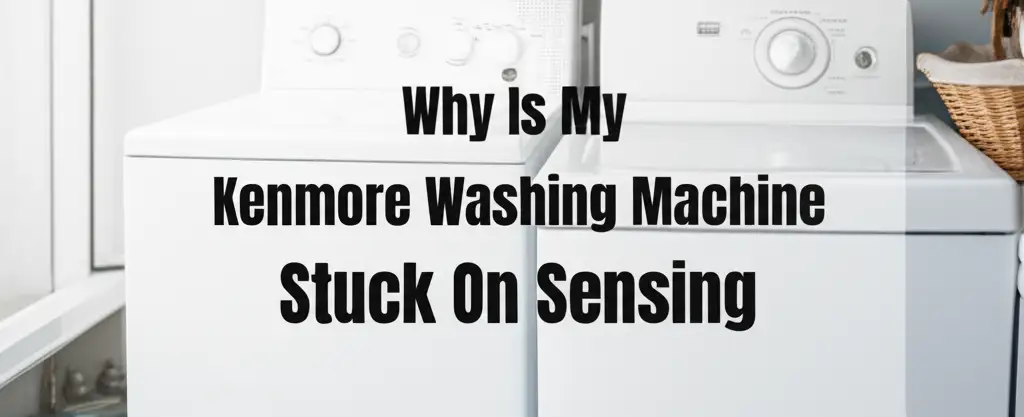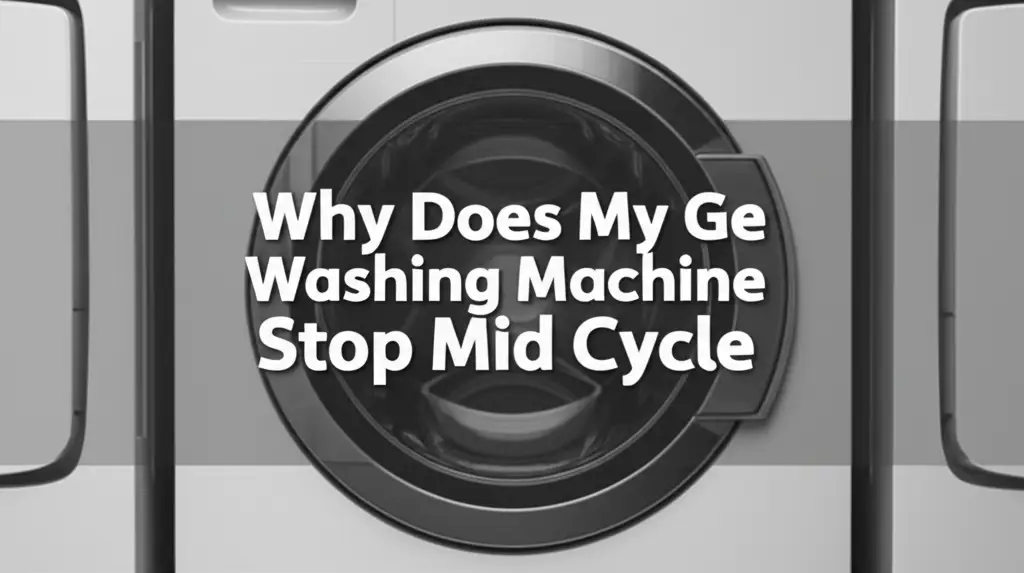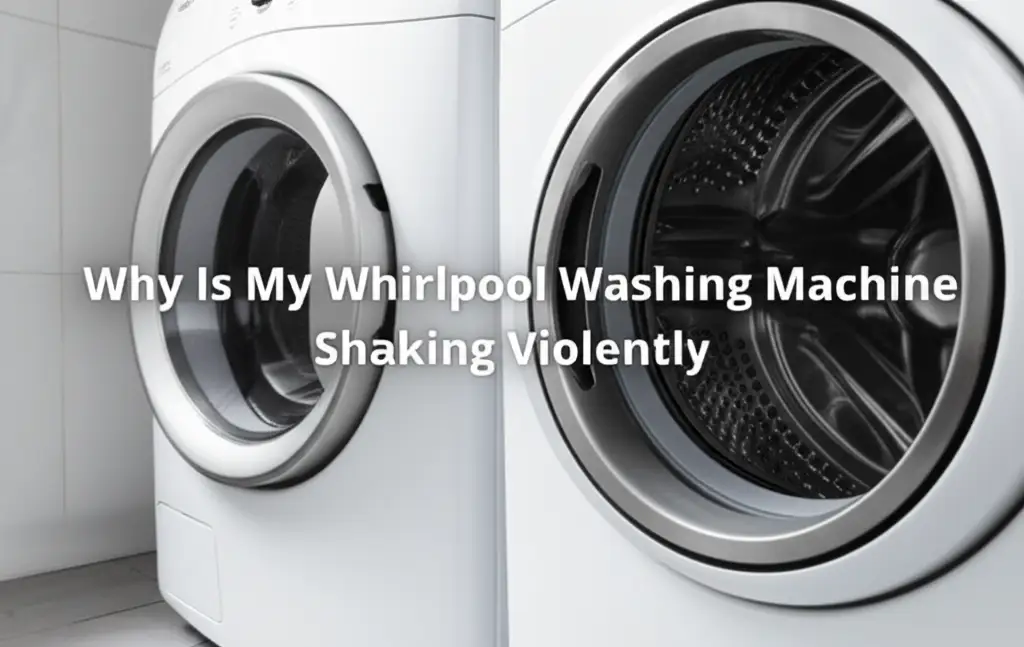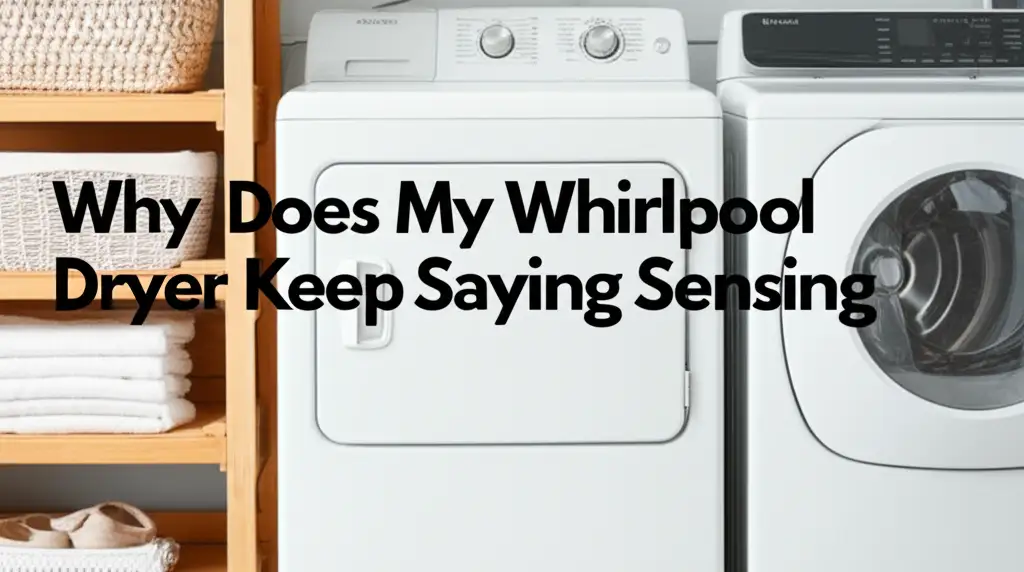· Todd Martin · Appliance Repair · 14 min read
Why Wont My Whirlpool Washing Machine Start Just Clicks
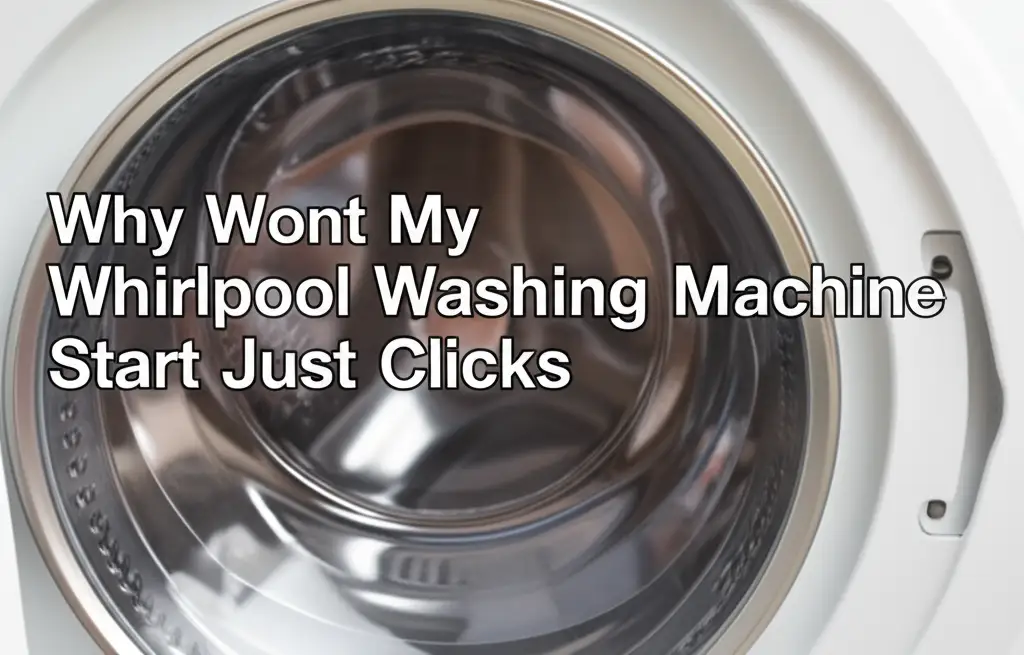
Whirlpool Washer Clicks But Won’t Start? Here’s Why!
A clicking sound from your Whirlpool washing machine often signals trouble. You press the start button, expect the familiar hum of water filling, but instead, you hear only a click. This can be incredibly frustrating, especially when you have a load of laundry waiting. Many homeowners face this exact issue, wondering why their reliable Whirlpool washer suddenly refuses to cooperate.
This guide will help you understand “why won’t my Whirlpool washing machine start, just clicks.” We will explore the common reasons behind this clicking noise and the machine’s failure to begin a cycle. You will learn to diagnose the problem, from simple checks to more involved component inspections. Our goal is to empower you with the knowledge to troubleshoot effectively, helping you decide if it is a DIY fix or time to call a professional. Let’s get your laundry routine back on track.
Takeaway
- Check the Basics: Ensure power, proper door closure, and correct cycle selection.
- Inspect Safety Switches: The lid switch or door latch is a frequent cause of clicking without starting.
- Assess Motor & Capacitor: These components are vital for the machine’s operation and can click if faulty.
- Look for Obstructions: A blocked drain pump or foreign object can prevent a cycle from beginning.
- Consider Control Board: Electronic issues with the main control board can cause various startup failures.
When your Whirlpool washing machine clicks but won’t start, it typically indicates that power reaches a component, but the circuit or mechanism required to initiate the next step of the wash cycle is incomplete or faulty. Common culprits include a defective lid switch or door latch, a strained motor trying to engage, or a main control board attempting to send a signal to a failed part.
Decoding the Click: What Does It Mean?
Hearing a click when your Whirlpool washing machine fails to start is a specific symptom. This sound tells you that an electrical relay is engaging, or a switch is attempting to close. It means the machine is receiving power and its “brain” (the control board) is trying to send a command. However, something prevents that command from being carried out.
The click itself is often the sound of a component receiving power but immediately encountering resistance or a safety lockout. For example, a relay might click when the control board tries to activate the motor or the water inlet valve. If the safety switch is open, or the motor is seized, the click happens, but no further action follows. This helps us narrow down potential problems. You need to investigate what component the control board is trying to activate.
Door Latch or Lid Switch Issues: The Common Culprit
One of the most frequent reasons a Whirlpool washing machine clicks but does not start involves its safety mechanisms. Modern washers, including Whirlpool models, have a door latch or lid switch. These components ensure the machine operates only when the door or lid is securely closed. This prevents water spills and accidental injuries during a cycle.
If this switch is faulty, damaged, or simply not engaging properly, the washer’s control board will receive an “open” signal. Even if you push the start button, the machine will not proceed with the wash cycle. It might click as it attempts to send power to the next component, but then stops due to the safety lockout. The click often comes from the relay trying to engage the wash cycle.
Diagnosing and Fixing Lid Switch Problems
First, visually inspect your washer’s lid or door. Make sure it closes completely. Sometimes, clothes or items caught in the door seal prevent a proper close. Check for any visible damage to the latch mechanism or the strike plate on the machine body.
Many lid switches have a plastic or metal tab that fits into a slot on the washer frame. If this tab is broken, bent, or misaligned, the switch will not activate. Test the switch for continuity with a multimeter if you are comfortable with electrical testing. If there is no continuity when the lid is closed, the switch is likely bad and needs replacement. This is a common and relatively simple DIY repair for many homeowners.
Troubleshooting the Motor & Capacitor: Powering the Spin
The motor is the heart of your Whirlpool washing machine, responsible for agitating and spinning clothes. If you hear a click but no movement, the motor itself, or its associated starting capacitor, could be the problem. The capacitor provides an initial jolt of electricity to help the motor overcome inertia and start running.
When you press start, the control board sends power to the motor. If the motor is overloaded, seized, or has a faulty winding, it may try to draw power and click (often from an overload protector or relay), but fail to turn. Similarly, a weak or failed capacitor will not give the motor the necessary boost. The motor hums or clicks briefly, but cannot get started.
Checking the Motor and Capacitor
- Motor Overload: Unplug the washer and try to manually turn the agitator or drum. If it feels stiff or won’t move, something might be jamming the motor or transmission. Remove any foreign objects, like coins or small items that might have fallen into the tub.
- Capacitor Test: A bad capacitor often looks swollen or has signs of leakage. You can test a capacitor with a multimeter, but this requires caution as capacitors can store an electrical charge. If the capacitor is faulty, replacing it is generally straightforward after safely discharging it.
- Motor Issues: If the motor itself is burnt out or has internal damage, it will not respond. You might smell a burning odor from the motor area. In this case, motor replacement is necessary. This is a more complex repair and often requires professional help. Sometimes, a clogged drain pump can also prevent the motor from starting a cycle, as the machine might be waiting to drain before beginning the wash. If your washer is having trouble with water, you might find more information on issues like it not filling with water here.
Drain Pump Obstructions: Preventing Startup
It might seem counterintuitive, but a problem with your Whirlpool washing machine’s drain pump can prevent it from starting a new cycle. Many modern washers have safety features that prevent a new wash cycle from beginning if the machine detects water remaining in the tub from a previous cycle. If the drain pump is clogged or faulty, the machine cannot clear this water.
When you press start, the control board initiates a check. It might click as it tries to activate the drain pump, but then stops if the pump fails to clear the water. This is a protective measure to prevent overfilling or flooding. The clicking might be the control board trying to engage the pump relay, or the pump motor itself trying to turn but being blocked.
Clearing Drain Pump Issues
- Check for Blockages: First, turn off and unplug your washing machine. Locate the drain pump filter, usually found at the front bottom of the machine behind a small access panel. Open it carefully, as some water might spill out. Remove any lint, coins, buttons, or other debris that could be clogging the pump or filter. You can also explore specific guides on how to clean your washing machine filter here for general instructions, or for a more specific approach for your Whirlpool model, learn how to clean the pump on a Whirlpool washing machine.
- Inspect Drain Hose: Ensure the drain hose is not kinked or blocked. A severely kinked hose can also prevent proper draining.
- Test the Pump: If the filter is clear and the hose is fine, the pump itself might be faulty. You can test the pump for power with a multimeter or listen for its operation if you manually set the machine to a drain-only cycle. If the pump runs but no water drains, it might have a broken impeller. If it does not run at all, it likely needs replacement.
Control Board Malfunctions: The Brain of Your Washer
The control board is essentially the “brain” of your Whirlpool washing machine. It receives inputs from switches and sensors, and then sends commands to all other components like the motor, water valves, and drain pump. If the control board is faulty, it can send incorrect signals, no signals, or fail to process information correctly. This can lead to a clicking noise without the machine starting.
A clicking sound from the control board often means a relay on the board is attempting to engage. However, due to a internal circuit problem, a short, or a component failure on the board itself, the command does not complete. The board might “click” trying to activate a part, but then instantly cut power because it detects an error or cannot establish the connection. This can manifest as the washer having power but not starting. If your dryer has a similar issue, you might find some relevant information on troubleshooting a Whirlpool dryer that turns on but does not start here.
Diagnosing a Faulty Control Board
- Error Codes: Many Whirlpool washing machines display error codes when the control board detects an issue. Check your user manual for a list of error codes and what they mean. Sometimes, blinking lights can also indicate a problem; you can learn more about this by checking resources on why your Whirlpool washing machine is blinking all the lights.
- Visual Inspection: Unplug the machine and access the control board. Look for any signs of burning, charring, or damaged components (like swollen capacitors). These are clear indicators of a failing board.
- Power Reset: Sometimes, electronic glitches can be resolved with a simple power reset. Unplug your washer for 5-10 minutes, then plug it back in. This can sometimes clear temporary errors in the control board’s memory.
- Replacement: If the control board is the issue, it needs replacement. This is usually an expensive part and can be complex to replace, often requiring professional installation to ensure proper function and avoid further damage. Consider the age and overall condition of your machine when deciding on this repair.
Thermal Fuse or Overload Protector: Safety First
A thermal fuse or motor overload protector is a safety device designed to cut power to the motor or other components if they overheat. This prevents damage to the machine and reduces fire risk. If your Whirlpool washing machine motor tries to start, overheats rapidly, or senses an electrical overload, this protector will trip. The “click” you hear might be the sound of this safety device activating or deactivating.
When an overload protector trips, it usually resets once the component cools down. However, if the underlying cause of the overheating (like a seized motor or a major electrical fault) is still present, it will trip again immediately. A thermal fuse, on the other hand, is usually a one-time device. Once it blows, it needs replacement. It protects the machine if a motor draws too much current, indicating a deeper problem.
Checking Safety Devices
- Motor Overload Protector: If your machine tries to start and then clicks and stops, let it sit for 30 minutes to an hour. If it then starts normally, the overload protector likely tripped. The next step is to find out why it tripped. This points to a motor struggling (e.g., due to a heavy load, bad bearings, or a faulty capacitor).
- Thermal Fuse: Locating and testing a thermal fuse requires accessing internal components, often near the motor or control board. Use a multimeter to check for continuity across the fuse. If there’s no continuity, the fuse is blown and needs replacement. Remember, replacing a blown fuse only fixes the symptom, not the root cause. You must identify why it blew in the first place, or the new fuse will blow again. The underlying problem could be a failing motor, a short circuit, or an issue with the drive system.
Drive Belt or Transmission Problems: Mechanical Failures
While less likely to cause a distinct “click” without any other sound from the motor, severe mechanical failures in the drive system can prevent a Whirlpool washing machine from starting a cycle. If the motor tries to turn but the drive belt is broken, slipped, or the transmission is seized, the motor might struggle and the internal overload protector could click. It indicates a mechanical resistance that the motor cannot overcome.
The drive belt connects the motor to the transmission or agitator assembly. If this belt is broken, stretched, or has slipped off its pulleys, the motor will spin freely without moving the drum. The machine might try to engage the motor, resulting in a click, but no action. A seized transmission means the gears inside are locked, preventing any movement. This puts immense strain on the motor.
Inspecting Drive System Components
- Check the Drive Belt: Unplug the washer and gain access to the motor and drive belt. This usually means removing the back panel or tilting the machine. Visually inspect the belt. Is it intact? Is it correctly seated on both pulleys? Replace any broken or severely worn belts.
- Assess Pulleys: Ensure the motor pulley and the transmission pulley spin freely and are not damaged.
- Test Transmission: With the belt removed, try to manually turn the agitator shaft or drum. If it is completely seized and won’t budge, the transmission is likely the problem. Transmission issues are usually complex and expensive to repair. Often, a transmission replacement on an older machine is not cost-effective.
- Motor Connection: While checking mechanical parts, also ensure all electrical connections to the motor are secure. Loose connections can sometimes lead to intermittent starting or clicking noises. For those interested in deeper DIY appliance repair, you can find more information on do-it-yourself washing machine projects.
FAQ Section
Why does my Whirlpool washer click once and stop?
A single click followed by no action often points to a safety switch, like the lid switch or door latch, failing to engage. The machine attempts to start the cycle, senses the open safety switch, and stops immediately. It could also be a struggling motor trying to turn but failing to overcome resistance, leading to its overload protector tripping.
Can a bad door latch cause a Whirlpool washer not to start?
Yes, a bad door latch is a very common reason for a Whirlpool washer not to start. The machine’s control board requires a signal from the latch that the door is securely closed. If the latch is faulty or broken, it will not send this signal, preventing the washer from beginning any cycle as a safety precaution.
How do I reset my Whirlpool washing machine?
To reset most Whirlpool washing machines, unplug the power cord from the wall outlet for at least one minute. Then, plug it back in. This power cycle can often clear minor electronic glitches or error codes. Some models might have a specific reset sequence involving opening and closing the lid rapidly.
Is it worth repairing an old Whirlpool washer that clicks but doesn’t start?
Deciding whether to repair an old Whirlpool washer depends on the cost of the repair versus a new machine’s price and the washer’s overall condition. If the issue is a simple part like a lid switch or capacitor, it is often worth repairing. For expensive components like the control board, motor, or transmission, weigh the repair cost against buying a new, more efficient model.
What does a clicking noise mean on a washing machine?
A clicking noise on a washing machine typically means an electrical component, such as a relay on the control board or a safety switch, is attempting to engage. It indicates that power is reaching this point, but the machine is unable to proceed with the next step of the cycle due to an obstruction, a faulty component, or a safety lockout.
Why won’t my Whirlpool washing machine spin?
If your Whirlpool washing machine won’t spin, even if it starts and fills, common causes include a broken or stretched drive belt, a faulty motor or motor coupling, a bad lid switch or door latch, or a problem with the control board. A clogged drain pump preventing proper drainage can also stop the spin cycle from initiating.
Conclusion
A Whirlpool washing machine that clicks but won’t start is a common and frustrating problem. We have explored the primary culprits behind this issue, from simple safety interlocks to more complex motor and control board malfunctions. By understanding the role of the door latch/lid switch, the motor and its capacitor, the drain pump, the control board, and safety devices like thermal fuses, you can systematically diagnose the problem.
Remember to always prioritize safety by unplugging the machine before any inspection or repair. While some fixes, like replacing a lid switch or cleaning a drain pump, are manageable for the DIY enthusiast, others, such as control board or motor replacements, may require the expertise of a professional appliance technician. By following these steps, you are now equipped to tackle the issue when your Whirlpool washing machine starts clicking without beginning a cycle. Don’t let a small click disrupt your laundry routine. Take action today, and get your washer back to doing its job.
- Whirlpool washer
- washing machine repair
- washer troubleshooting
- washer clicks
- Whirlpool not starting
- appliance repair
- DIY washer repair


